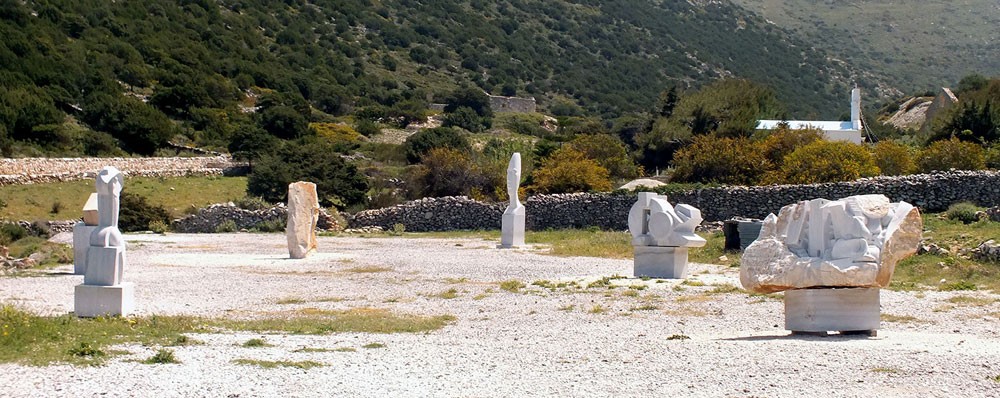
Parian marble, which is white and translucent, with a coarse grain and a very beautiful texture, was the main source of wealth for the island. The famous ancient marble quarries lie on the northern side of the mountain known as Marathi. The marble, which was exported from the 6th century BC onwards, was used by Praxiteles and other great Greek sculptors. It was obtained by means of subterranean quarries driven horizontally or at a descending angle into the rock. Several of these tunnels have yet to be discovered. Sculpted at the entrance of one of them is a bas-relief dedicated to Pan and the nymphs.
Parian marble was mainly quarried during the classical area and due to its extraordinary quality was considered one of the best marbles for sculpting. Some of the greatest masterpieces of ancient Greek sculpture were carved from Parian marble, including the Medici Venus and the Winged Victory of Samothrace.
Parian marble’s main rival in antiquity was Pentelic marble, which is also a flawless white albeit , its main characteristic though is that it contains a faint yellow tint which makes it shine with a golden hue under sunlight. Italian Carrara marble is also flawless white with a uniform faint grey tint. The Marathi ancient marble quarries have contributed a great deal to the island’s history and lead it to artistic, architectural and economic prosperity. The marble’s qualities and clarity are unique and the temples and statues that are made from it are outstanding.
Here are some ancient temples and statues made from Parian marble:
- Child of Kritias, Acropolis Museum, Athens
- Hermes of Praxiteles
- Frassiglia by Aristion, Archaeological Museum, Athens
- Male statues or Kouroi of Anavissos, Kea, Milos and Thassos
- Mantle-clad girl ,Acropolis Museum of Athens
- Mausoleum of Halicarnassus
- Temple of Zeus, Olympia
- The Harpist and the Flautist statuettes (2800-2300 BC)
- Venus de Milo
- Victory of Paros, Archaeological Museum, Paros
- Victory of Peonion, Olympia Museum
- Winged Victory of Samothrace, Louvre, Paris